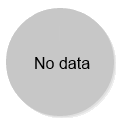| 9 | 6,318,771 | |||
| 0 | ||||
| 5 | 0 | |||
| 5 | 4 | |||
| 0 | ||||
The conservation status of Important Bird & Biodiversity Areas (IBAs) is monitored according to a practical and robust framework. The process involves regular grading of each IBA, annually or every few years, against a simple four-point scale, with respect to their state (the condition of the important bird populations and/or their habitats at the site), pressure (the threats impacting these important populations/habitats) and response (the actions being taken to conserve the important populations/habitats).
IBA monitoring is now well established in many countries (see national and regional reports here), although it is not yet systematically applied at all IBAs globally (e.g. in countries without a BirdLife Partner). If no data are displayed below, then national IBA monitoring has yet to commence or the data have yet to be shared with BirdLife International.
| 9 (100%) | 2012 | ||
| 18 | 2018 |
STATE Condition of trigger species/habitat good very poor not assessed n=9 sites |
PRESSURE Threats to trigger species/habitat low medium high n=9 sites |
RESPONSE Actions for trigger species/habitat high medium low very low n=9 sites |
|
'Trigger' bird species are those whose site-populations meet or 'trigger' IBA criteria at the global, regional or sub-regional levels. The above pie charts summarise the 'current' State, Pressure and Response at the IBAs, based on the most recent assessment per site. |
||
Trends in IBA conservation |
||
STATE v. poor poor moderate good |
PRESSURE low medium high v. high |
RESPONSE v. low low medium high 1 2 3 4 |
The lines indicate the average state, pressure and response over time, while grey bars show the sample size, i.e. the number of IBAs monitored in each year.
For some countries, particularly in some years, the assessed sites may represent only a small proportion of all IBAs nationally, and so may not be representative. Nevertheless, as BirdLife Partners share more data, the trends will become more robust and reliable.
The following case studies describe how the BirdLife Partnership is using monitoring data to better conserve IBAs:


Recommended Citation
BirdLife International (2025) Country profile: Cook Islands. Downloaded from https://datazone.birdlife.org/country/cook-islands on 12/01/2025.